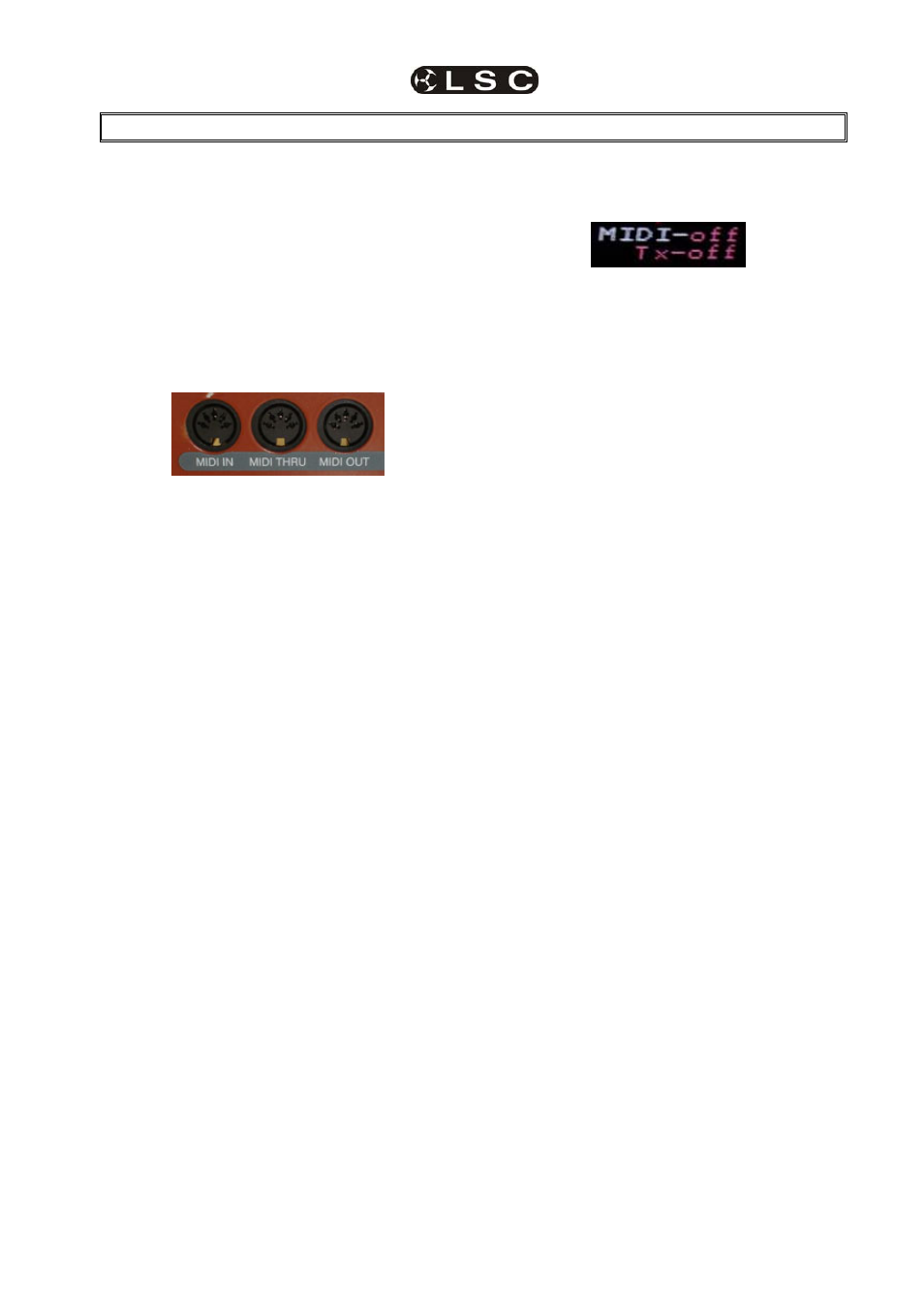20 midi – LSC Lighting maXim MP User Manual
Page 69

maXim
MP L(P) XL(P) XXL(P)
Operator Manual V3
LSC Lighting Systems (Aust) Pty. Ltd.
Page 63
20 MIDI
20.1 OVERVIEW
MIDI (Musical Instrument Digital Interface) is an
international standard for data communication
between musical instruments, computers and
other equipment such as lighting desks.
The possibility exists to either control the lighting
channels from a MIDI keyboard or a computer
with a MIDI output and suitable sequencing
software or to control a MIDI device from the
maXim.
Three MIDI connectors are provided on the rear
of the maXim.
• The MIDI IN connector receives signals from
other MIDI devices such as a keyboard or
sequencer. These signals can be used to
perform certain actions on the m as listed
below.
• The MIDI THRU connector transmits a
duplicate of the signal received at the MIDI in
connector.
• The MIDI OUT connector transmits the MIDI
signals that may be generated by certain
buttons that you press on the maXim as
listed below.
20.2 MIDI
ON/OFF
To utilise the MIDI functions, you must not only
connect the maXim to a MIDI device, but you
must also turn ON the MIDI function.
HOLD
[function], tap [f/a] (setup).
The display asks “Lock Console?
Press [no].
The display asks “Set MIDI on?”
Press [yes].
The MIDI function should only be turned on
when you want the maXim to respond to the
MIDI signals.
20.3 MIDI TRANSMIT ON/OFF
When the MIDI function is turned ON, you can
also elect to “Transmit” MIDI from the maXim.
HOLD
[function], tap [f/a] (setup).
The display asks “Lock Console?”
Press [no].
The display asks “Set MIDI off?”
Press [no].
The display asks “Set MIDI transmit?”
Press [yes].
The current state of the MIDI receive and MIDI
Tx (Transmit) is shown on the bottom of the
video screen.
20.4
MAXIM MIDI MAPPING
The MIDI protocol uses many different types of
messages. One type of message that MIDI
sends is the note ON / OFF message. Each note
on the MIDI keyboard has a number assigned to
it. The range of MIDI note numbers is 0 to 127.
For example, the 88 keys on a grand piano
correspond to MIDI note numbers 21 to 108,
Many maXim buttons are mapped to MIDI note
numbers (see table below) so that pressing a
particular maXim button is the same as pressing
the MIDI keyboard note to which the button is
mapped.
• A MIDI note ON message is equivalent to
pressing the maXim button to which it is
mapped.
• A MIDI note OFF message is equivalent to
releasing the maXim button to which it is
mapped
MIDI signals are sent and received on 16
separate channels on the one cable.
The maXim only uses channels 1, 2, 3 and 4.
• MIDI channel 1 is used for the various control
buttons as listed below and for EDIT wheel
movements.
• MIDI channel 2 is used for the yellow f/a
buttons as listed below.
• MIDI channel 3 is used for the red f/a buttons
as listed below.
• MIDI channel 4 is used for the blue f/a
buttons (not on maXim MP) as listed below.
20.5 CONTROLLING THE MAXIM FROM A
MIDI DEVICE
MIDI can be used to control many functions on
the maXim by emulating maXim button presses.
The table below shows the maXim buttons that
are controlled by relevant MIDI messages.
Here are a few examples of controlling a maXim
by MIDI …..
Flashing a channel or scene. For example, if the
maXim receives the MIDI “note 48 On”
command on MIDI channel 2, it will flash Yellow
channel 1 to the level set on the flash master. A
MIDI “note 48 Off” command on MIDI channel 2
will turn off Yellow channel 1.
Stepping a stack. If the maXim has a stack on
the stack master and it receives the MIDI “note
53 On” message then the “note 53 Off” message